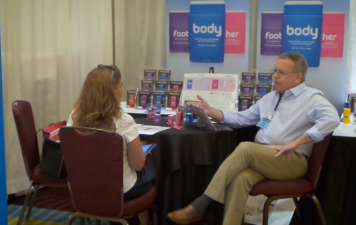The value of ECRM Efficient Program Planning Sessions is that you have dedicated 10- or 20-minute meetings with the captive audience of a buyer. You can’t get this at a traditional tradeshow, and to get the volume of meetings that you get in a two or three-day EPPS would take several months of travel, time, and expense. So it’s important for suppliers to make the most of these meetings.
Having represented suppliers at almost 250 EPPS programs, I’ve seen that those suppliers that achieve the greatest success are those that are best prepared, and who focus on providing the buyer with information in five key areas of their business. Here they are:
- Company info. Who is this company, is it financially viable? What are its current successes, and is its management credible? Be brief -- they don't need am entire history; just the key stats.
- Incremental Product Opportunity. Does the suppliers product or products represent incremental sales and profits to the buyer? Will it “grow” the category, not just swap (or cannibalize) dollars with another product. Incrementality can be defined many ways: a new product concept, bringing in new users (different demographics, natural product consumers, etc.,), a new delivery form, a new size, bonus pack, or premium pricing to trade consumers up. Be creative on how you define the incrementality of your product.
- Pricing. Does the pricing make sense in terms of value and competition? Is the category price sensitive? Is it an impulse purchase? Can the account make an acceptable margin? Keep in mind that price can connote efficacy, and that many premium products offer a solution to a serious condition, and consumers are willing to pay more if it solves a problem or improves their quality of live -- delivering on its promise. Don’t always go for the lowest price, as it can be difficult to win a price war. Plus, manufacturers need margin dollars to advertise and market a product successfully.
- Advertising/Marketing. Ninety percent of new products from first time vendors fail in the first two years primarily because the product is not properly marketed, either because there is not enough money available or the advertising/marketing is not effective or aggressive enough. The buyer MUST know that this product has an aggressive advertising and marketing campaign, that the company knows how to market and advertise, and that it has the right people in place to market successfully. There are many ways to successfully market and advertise: social media, SEO, radio, print, sampling, TV, and DRTV are some examples. Most of the time, buyers will decide based on how compelling the advertising story is. (I’ll soon post a follow-up column on how to determine how much to spend on advertising).
- Sales & Marketing Team. Is the right sales and marketing team in place to launch the product? It is critically important that the buyer knows that the sales/marketing team (either company personnel, experienced consultants, sales management, brokers or advertising company) knows exactly what they are doing. Accounts do not have time to hand-hold a new company through the set up process. That is why having the right sales management in place is key.
Now here’s an important point to remember. You must cover the above points in the first half of the meeting. That means 5 minutes for 10-minute meetings and 10 minutes in 20-minute meetings. Do not spend more than half of the meeting time on this. The buyer does not need more information at that point, and with 50 or 60 other meetings, they are only going to remember the key points anyway. I highly recommend using no more than eight to 10 presentation slides. Brief bullet points only and one graphic per page is best. Always have a presentation leave behind available in hard copy and email.
The second half of the meeting should be used for closing. This means you stop pitching and find out what the buyer thinks, with questions that lead toward a concrete follow-up deliverable. Are they interested? Are there any objections? What is the timing of the buyer’s planogram?
At the three- or two-minute warning, it’s time to determine follow ups and outline next steps, whether those next steps are sending samples, broker follow up, a follow up meeting or call back date.
From this point on, it all comes down to follow up. But we’ll cover that in a future column!


John O’Maley is a 1973 West Point Graduate. Captain, Ranger, Airborne, 6-years active duty, U.S. Army, Last Military Assignment Tank/Armored Company Commander. P&G Alumni (manufacturing, marketing, sales). 34 total years in business. 22 Successful years as Founder/CEO/President of John O’Maley & Associates, National Sales & Marketing Consulting Company. 125 brands successfully launched. Contact: 513-227-7191